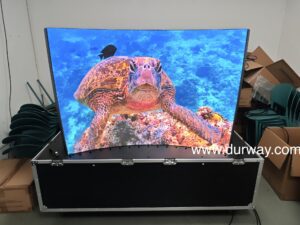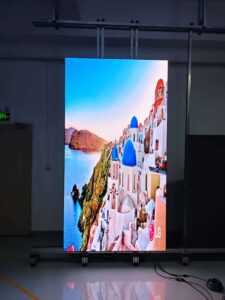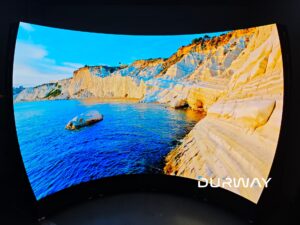When shopping for a new screen—whether it’s a television, monitor, or LED wall—you’ll often encounter terms like UHD and OLED. But what do these really mean? More importantly, how are they different? This article breaks it down in simple terms so you can better understand which display technology is best suited for your needs.
Understanding UHD (Ultra High Definition)
UHD stands for Ultra High Definition. It refers to the resolution of the screen—essentially, how many pixels are packed into the display.
Standard UHD typically means 3840 x 2160 pixels, which is four times the resolution of Full HD (1920 x 1080).
It’s often labeled as 4K UHD and delivers sharper images with more detail.
UHD doesn’t describe how the screen is built or how it emits light—it only describes the number of pixels. You can find UHD in a wide range of screen types, including LED, LCD, OLED, and QLED displays.
Understanding OLED (Organic Light-Emitting Diode)
OLED is a display technology, not a resolution format. It refers to how each pixel on the screen is lit.
Each pixel in an OLED screen emits its own light.
There’s no need for a backlight, unlike traditional LED or LCD screens.
OLED offers true blacks, higher contrast, and better viewing angles.
Because OLED pixels can turn off individually, the technology is ideal for rich, deep visuals and cinematic contrast.
UHD vs OLED: Key Differences Explained
Here’s where people often get confused—UHD and OLED aren’t direct competitors. One is about resolution, and the other is about display technology.
| Feature | UHD | OLED |
|---|---|---|
| Definition | Refers to resolution (e.g., 3840×2160) | Refers to how the screen produces light |
| Technology | Can be used with LED, LCD, OLED, etc. | Organic pixels emit their own light |
| Black Levels | Depends on the backlight type | Perfect black (pixels can turn off completely) |
| Contrast | High (depends on panel) | Very high |
| Viewing Angles | Varies by panel | Excellent from all angles |
| Energy Efficiency | Efficient, but backlit | More efficient with dark content |
| Price | Generally lower | Typically more expensive |
You could have a display that is both UHD and OLED—for example, a 4K OLED TV.
Which One Should You Choose?
If you want sharp detail: Look for UHD or higher resolution (such as 8K).
If you care about visual richness and deep contrast: Choose OLED.
If you’re installing a large screen in a high-end environment: OLED is better for impact, but UHD LED screens offer more flexibility and cost-efficiency.
For LED walls and commercial displays, many UHD LED panels offer excellent visual performance at scale, while OLED is more common in premium flat-panel TVs or smaller-format displays.
Why This Matters in Professional Display Projects
If you’re building an immersive installation—like a museum display, broadcast studio, or showroom—it’s important to understand these terms:
A UHD LED wall gives you pixel-level sharpness for large-scale visuals.
An OLED screen gives you perfect black and ultra-high contrast, making it ideal for storytelling or cinematic effects.
At Durway, we focus on delivering UHD-level visual clarity through advanced LED displays—engineered for immersive, high-performance environments.
We Provide the Hardware. You Control the Experience.
Durway provides ultra-fine pixel pitch LED screens that deliver UHD or higher resolution, high contrast, and seamless performance across curved, dome, or custom-shaped installations.
We don’t produce the content—our clients or their creative partners do—but we make sure the hardware delivers the visual power needed to bring that content to life.
Whether you’re using LED spheres, immersive domes, or large curved displays, great content requires equally great display technology. That’s where we come in.
Want to elevate your display project with cutting-edge UHD LED hardware?
Visit www.durway.com and speak with our team today.








